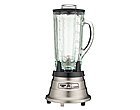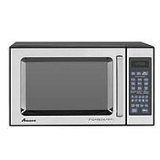To repair or replace?
That is the question we have to deal with when faced with a broken or worn-out appliance. In the age of planned obsolescence, it’s usually less expensive to replace an appliance rather than repair it. But what is the best thing to do?
We recently had to make decisions when two of our appliances went out of commission.


First, the glass carafe of our much-beloved and used-daily blender suffered a chip to the rim. The rough edge of the thick glass made the carafe a little dangerous, but not unusable. I did a quick search of the internet ($75.00!) and decided that we could make do with the slightly scarred carafe for the time being. But after a couple months, the chip turned into a crack which rendered the carafe completely unusable. We were blender-less.
We had received a gift certificate to a kitchen store as a Christmas gift so we headed over there to purchase a new blender. The cost of replacing the same blender that we had was about $175.00. That seemed to be a lot to spend when we had half of a functioning blender at home, in the form of the metal base which still worked fine. We looked at some other blenders, but we didn’t like them as well, because most of them had a lot of plastic in the base or the carafe.
We came back to square one: we had a blender we liked a lot. Why not replace the carafe?
And that is what we did. We researched and compared prices for replacement carafes and shipping, and we found a reasonable price. Our new glass carafe arrived promptly, and we are back in the smoothie/ breakfast shake business.

We went down a different path with the microwave that had been in our family longer than either of our two now-adult children. When we were expecting, our parents ganged up and bought us a microwave oven as a gift. We didn’t really think we needed one; they thought they knew better and they wanted to help us out. We did use the microwave, but mostly for reheating, hardly ever for real cooking. Yes, it was handy for reheating leftovers or tea that had gone cold, but was it really essential?
Our first clue that death was coming soon for the microwave was when dial used to set the timer failed to change the cook time. For a couple of months, we could get the dial to engage if we turned it at just the right angle. Then the control panel started acting wiggy, and the clock pooped out. We really missed the clock! Finally, the dial stopped changing the cook time altogether; you could spin it but not enter a cooking time, and therefore, not cook. No clock, no “heat” = a useless metal box in our kitchen.
A repair might have been possible, however, we didn’t want our microwave repaired. We were ready to say goodbye. Instead of sending the microwave oven directly to the landfill, I made a post on our local freecycle list, just in case someone wanted to attempt to repair the microwave oven– and someone did.
What lessons might we learn from this? As the old saying goes:
Use it up,
wear it out,
make it do,
or do without.
Or as the bumper sticker advices:
Reduce, Reuse, Recycle, Repair
The things we buy don’t disappear when we tire of them or when they break and we throw them out. Appliances, big and small, are pretty slow decomposers so they are here on the earth for a long time to come. We need to make good decisions when we are purchasing items, buying things that are well-made and likely to last, things that we need and won’t tire of soon.
It’s hard work, of course, to stay ever vigilant in our purchasing habits, but it’s worth our efforts in the long run. If not for us, for the generations who come after us.


